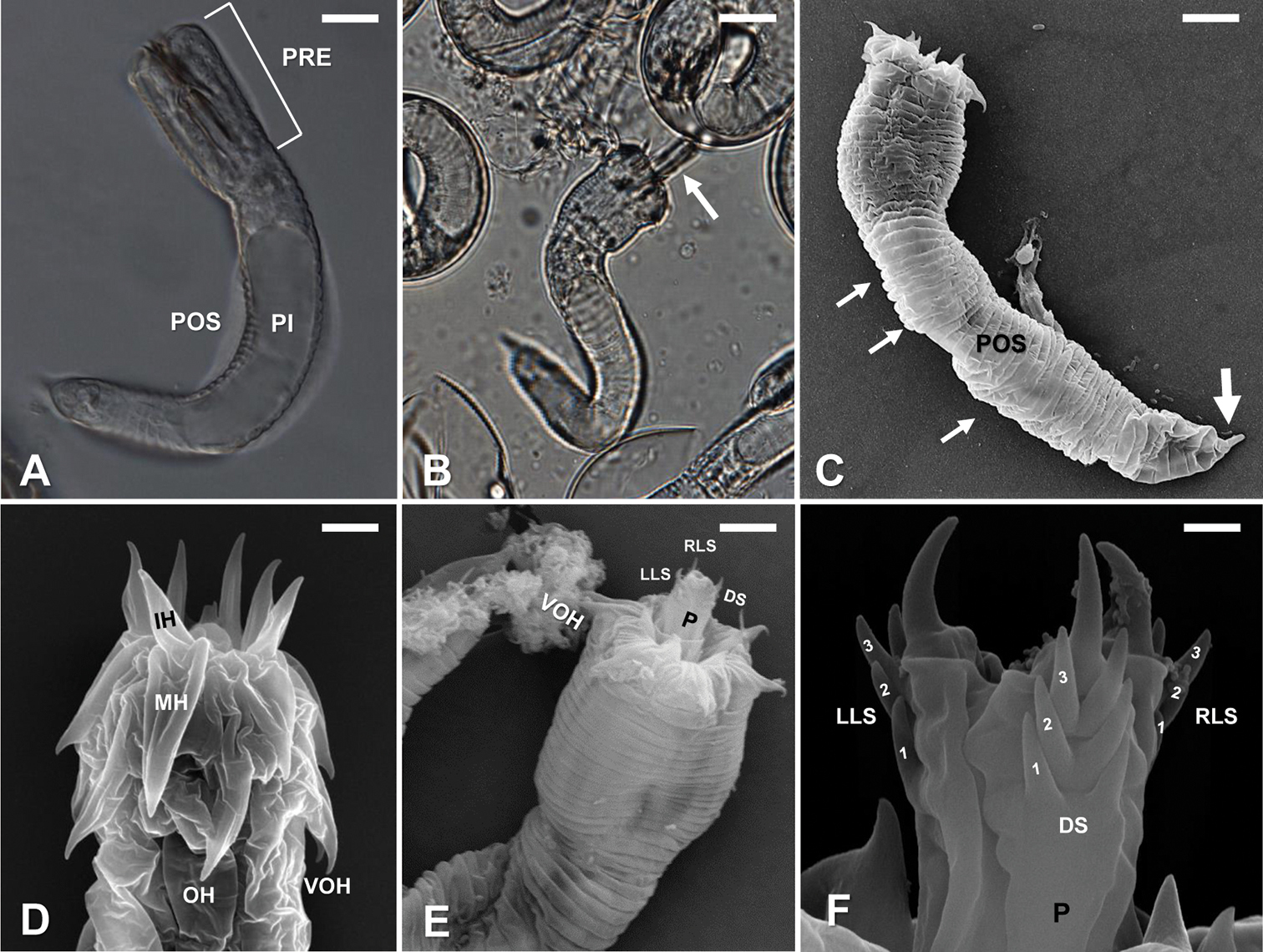
|
||
|
Gordius terrestris sp. nov., larvae, light (A, B) and SEM (C–F) photomicrographs A live larva, showing the preseptum (PRE), postseptum (POS) and pseudointestine (PI) B recently hatched larvae showing everted proboscis (arrow) C larva note the superficial annulations (small arrows) and a single terminal spine located (large arrow) on the posterior region of the postseptum (POS) D preseptum, showing the arrangement of three sets of cuticular hooks, including outer hooks (OH), middle hooks (MH) and inner hooks (IH); and fused ventral outer hooks (VOH) E anterior end with the eversible proboscis (P); note the distinct spines on the distal end of the left lateral side (LLS), right lateral side (RLS) and dorsal side (DS) in respect to the ventral outer hooks (VOH) F partially everted proboscis (P) showing pairs of small spines (numbers) and a larger terminal spine on the distal end of the left lateral (LLS), right lateral (RLS) and dorsal sides (DS). Scale bars: 12 µm (A); 13 µm (B); 8 µm (C); 2.5 µm (D); 6 µm (E) 0.8 µm (F). |